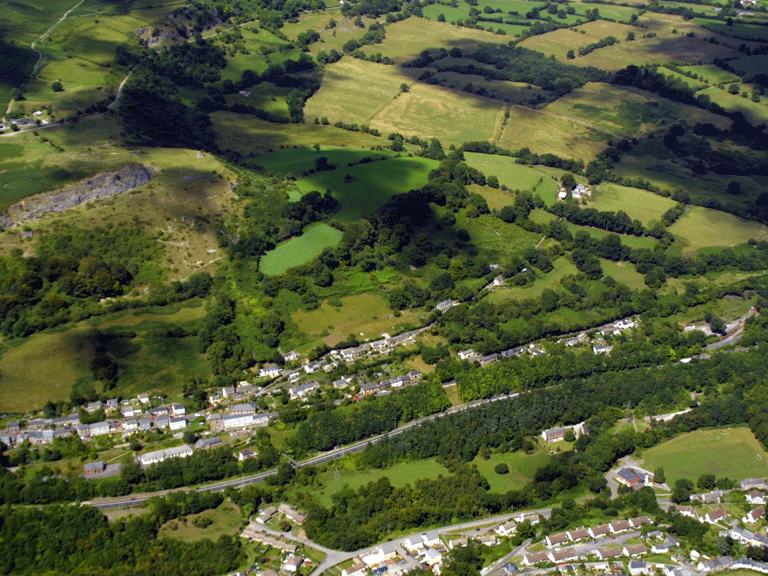Clydach Gorge
002 Clydach North (Cheltenham)

HLCA 002 Clydach North (Cheltenham)
Post-medieval industrial settlement associated with local iron and limestone production; industrial workers' housing; non-conformist Chapels.Back to Map
Historic Background
The historic landscape area of Clydach North (Cheltenham) is an area, part of the Duke of Beauforts' Estate, associated with the development of the Clydach Ironworks (HLCA 003) and the surrounding limestone quarries from the late 18th century. This settlement, now generally known as Clydach, but formerly Cheltenham, essentially comprises ribbon settlement of early 19th century short rows. These are mostly terraces of stone-built houses associated with the Brynmawr Coal & Iron Co. Ltd. The area also retains a number of interesting Non-conformist Chapels: Siloam Chapel of 1829, the English Wesleyan (1829) and the Ebenezer Welsh (1828). The settlement is located at the junction of the Merthyr-Govilon turnpike road and the Clydach Railroad, built 1793-5, which ran from Rhyd-y-blew, connecting with ironworks at Beaufort, to a forge at Glangrwyney in the Usk valley (stone sleeper blocks survive on the other side of the road from Siloam Chapel).
Historic Landscape Characteristics
Clydach North (Cheltenham) is an area, which is characterised by ribbon development along the Merthyr-Govilon Turnpike Road around its junction with the late 18th century Clydach Railroad. The area is characterised chiefly by much-altered workers' housing of late 18th and early-mid 19th century date, generally short rows of double-fronted two storeyed housing built in the local stone, either pennant or Old Red Sandstone. On the steep lower slopes many houses have three stories visible on the down-slope side, and two on the upper; house-over-house construction may have been employed here, however further in-depth field survey will be required to establish this for certain.
Whilst the area has a few shops/commercial properties and at least one surviving Inn, the Rock and Fountain, the other main characteristic of the area is provided by the settlement's non-conformist (largely redundant) chapels.